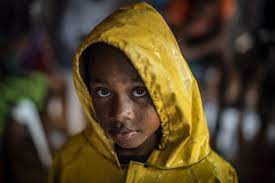Children’s Climate Risk Index: UNICEF:

The United Nations Children’s Fund (UNICEF) in collaboration with Fridays for Future launched a report named ‘The Climate Crisis Is a Child Rights Crisis: Introducing the Children’s Climate Risk Index’.
- It is the first comprehensive analysis of climate risk from a child’s perspective.
- Earlier an analysis, based on Notre Dame Global Adaptation Initiative (ND-GAIN) index, had shown the impact of Climate Change on children across the world.
Children’s Climate Risk Index:
- It ranks countries based on children’s exposure to climate and environmental shocks, such as Cyclones and Heatwaves, as well as their vulnerability to those shocks, based on their access to essential services.
- Pakistan (14th), Bangladesh (15th), Afghanistan (25th) and India (26th) are among four South Asian countries where children are at extremely high risk of the impacts of the climate crisis.
Indian Scenario:
- India is among four South Asian countries where children are most at risk of the impacts of climate change threatening their health, education, and protection.
- It is estimated that more than 600 million Indians will face ‘acute water shortages’ in the coming years, while at the same time Flash Flooding is to increase significantly in the majority of India’s urban areas once the global temperature increase rises above 2 Celsius.
- Twenty-one of the world’s 30 cities with the most polluted air in 2020 were in India.
Global Scenario:
Countries With Maximum Vulnerability:
- Young people living in the Central African Republic, Chad, Nigeria, Guinea, and Guinea-Bissau are the most at risk of the impacts of climate change.
- These children face a deadly combination of exposure to multiple climate and environmental shocks with a high vulnerability due to inadequate essential services, such as water and sanitation, healthcare and education.




